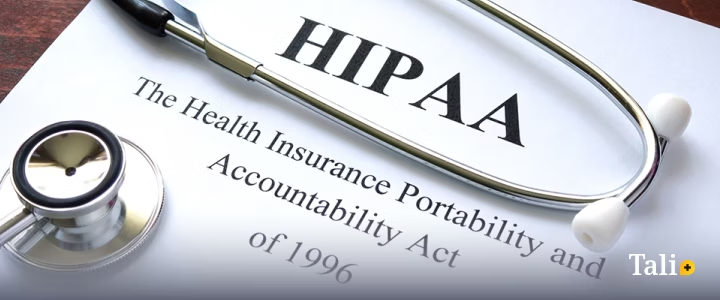Healthcare providers must protect patient information while maintaining clear communication. The Health Insurance Portability and Accountability Act (HIPAA) establishes strict rules for managing protected health information (PHI). Violating these rules can lead to hefty fines and damage to reputation. Here are some practical steps to set up a HIPAA compliant email service.
What Does HIPAA Require?
HIPAA requires healthcare providers to protect all personally identifiable health information. This includes any communication containing patient names, medical conditions, treatment plans, or appointment details.
Under the Privacy Rule, providers usually need written patient authorization before sharing PHI. The Security Rule requires safeguards like access controls, audit logs, and encryption for electronic PHI. This means your practice must take steps to secure digital communications and keep patient data confidential.
How Should You Email?
Email communication requires specific protections to maintain HIPAA compliance. Standard email is typically not encrypted, which makes it unsafe for sending Protected Health Information (PHI) without proper safeguards. For security, use an encrypted HIPAA-compliant email service. These platforms automatically encrypt messages containing patient information and require the recipient to authenticate before viewing.
Create clear email policies for your staff. These policies should include guidelines on what information can be shared via email and with whom it can be shared. Always require the use of secure email for all PHI communications, such as appointment confirmations that include patient names and medical details. Train your team to recognize what constitutes PHI in email communications. For example, patient names combined with appointment times, medical conditions, or treatment information are protected data and should be handled securely.
Should You Use Texts?
Text messaging offers convenience but can also pose significant HIPAA risks. Standard SMS messages are not encrypted and are stored on multiple servers, which can create security vulnerabilities. To protect patient information, use secure messaging platforms specifically designed for healthcare. These platforms encrypt messages, require user authentication, and keep audit trails. Choose platforms that integrate with your existing systems and provide mobile apps for staff convenience.
Establish clear policies on texting that define acceptable use cases. Many practices use secure messaging for appointment reminders, prescription updates, and basic health tips. Avoid sharing detailed medical information or test results through any messaging platform for patient privacy.
How Do Portals Help?
Patient portals are secure, HIPAA-compliant tools that allow safe communication between your practice and patients. These web-based platforms give patients controlled access to their health information and enable secure messaging with providers. When choosing a patient portal, check if it meets HIPAA requirements by checking for features like user authentication, automatic logoff, audit logging, and data encryption. The portal should also seamlessly integrate with your electronic health record system for easier information sharing.
To encourage patients to use the portal, provide clear instructions and support. Some patients might be hesitant to adopt new technology, so offer training materials and staff assistance. Emphasize benefits such as 24/7 access to test results, easy appointment scheduling, and secure provider communication.
What About Staff Training?
Staff training is the foundation of HIPAA compliance when communicating with patients. For compliance, develop thorough training programs that cover HIPAA basics, communication policies, and safe technology use. Incorporate real-world scenarios and role-playing exercises to help staff understand practical applications. Regular refresher courses will keep compliance at the forefront.
Get a HIPAA Compliant Email Service
HIPAA compliance in patient communication is key to maintaining the trust that forms the foundation of quality healthcare. Begin by evaluating your current communication methods to identify areas that need improvement. Gradually implement secure communication tools, and provide thorough staff training and patient education. Consult a HIPAA compliance expert to enhance workplace safety.

Leave a Reply